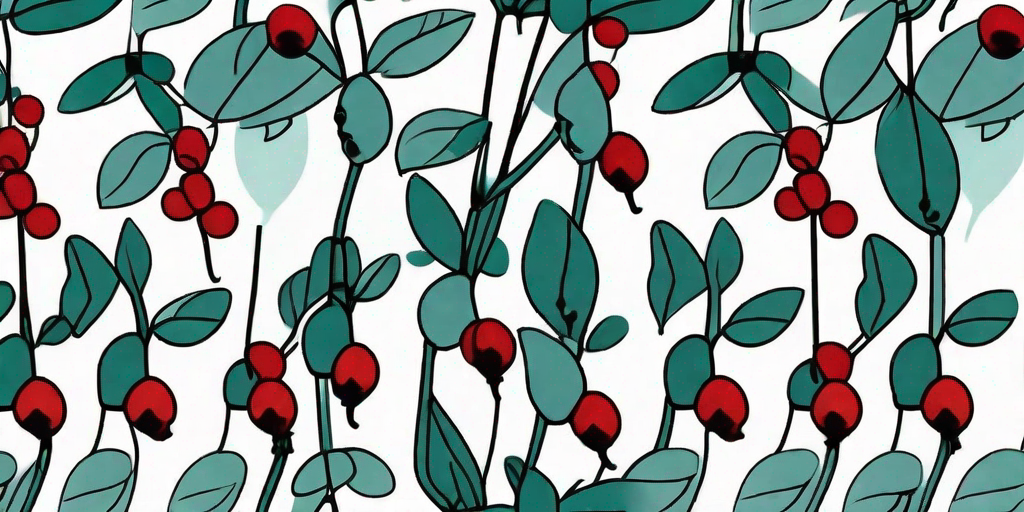
In the realm of nature, beauty often hides danger. The Rosary Pea, a plant known for its vibrant red seeds, is a perfect example of this paradox. This seemingly innocent plant holds a lethal secret that has intrigued botanists, poison enthusiasts, and curious minds alike. So, buckle up, dear reader, as we embark on a journey to unravel the deadly beauty of the Rosary Pea.
The Enchanting Appearance of Rosary Peas
Let's start with the superficial, shall we? The Rosary Pea, or Abrus precatorius if you want to get all scientific, is a vine native to tropical areas. Its bright red seeds, adorned with a single black spot, are undeniably attractive. But remember, looks can be deceiving!
The plant itself is a climber, reaching up to 20 feet in height, and boasts delicate pink-purple flowers. It's easy to see why this plant is often used for ornamental purposes. However, beneath this charming facade lies a deadly secret.
The Allure of the Seeds
The seeds of the Rosary Pea are its most distinctive feature. Each seed is about the size of a ladybug and has a glossy finish that makes it look almost artificial. In fact, these seeds are so pretty that they've been used in jewelry making for centuries. Talk about deadly fashion!
However, it's not just their appearance that makes these seeds fascinating. They're also incredibly hardy. They can survive in harsh conditions and remain viable for many years. This resilience, combined with their beauty, has led to their widespread use in various cultures.
The Lethal Secret of Rosary Peas
Now, let's get to the juicy part. The seeds of the Rosary Pea contain a toxin known as abrin. Abrin is one of the most potent plant toxins known to man. Ingesting a single seed can be fatal if the seed's hard coat is damaged and the toxin is released.
Abrin works by inhibiting protein synthesis within cells, causing them to die. Symptoms of abrin poisoning can include nausea, vomiting, abdominal pain, and even death. So, while these seeds may look tempting, it's best to admire them from a safe distance.
Historical Uses of Abrin
Despite its lethal nature, abrin has been used throughout history for various purposes. In ancient times, the seeds were used as a measure of weight due to their uniform size. They were also used in traditional medicine, although this practice was fraught with danger.
In some cultures, the seeds were even used as weapons. The seeds were crushed into a powder and used as a poison. This deadly powder could be applied to the tips of arrows or darts, creating a weapon that was as beautiful as it was deadly.
How to Handle Rosary Peas Safely
If you happen to come across Rosary Peas, it's important to handle them with care. Always remember that the seeds are highly toxic if ingested or if they come into contact with open wounds.
When handling the seeds, it's best to use gloves and avoid touching your face. If you have children or pets, make sure to keep the seeds out of their reach. It's also a good idea to inform others about the dangers of these seeds. After all, knowledge is the best defense against danger.
Frequently Asked Questions
Are all parts of the Rosary Pea plant poisonous?
Yes, all parts of the Rosary Pea plant contain the toxin abrin. However, the seeds contain the highest concentration of the toxin.
What should I do if I accidentally ingest a Rosary Pea seed?
If you or someone else accidentally ingests a Rosary Pea seed, seek medical attention immediately. Abrin poisoning is a serious condition that requires immediate medical intervention.
Can Rosary Peas be used for medicinal purposes?
While Rosary Peas have been used in traditional medicine, this practice is extremely risky due to the high toxicity of the seeds. It's best to avoid using these seeds for medicinal purposes.
Conclusion
The Rosary Pea is a fascinating plant that perfectly embodies the concept of deadly beauty. Its vibrant seeds and delicate flowers make it an attractive addition to any garden, but its lethal secret serves as a stark reminder of the dangers that can lurk beneath the surface.
So, the next time you come across a Rosary Pea, remember to admire its beauty from a safe distance. After all, looks can be deceiving!















